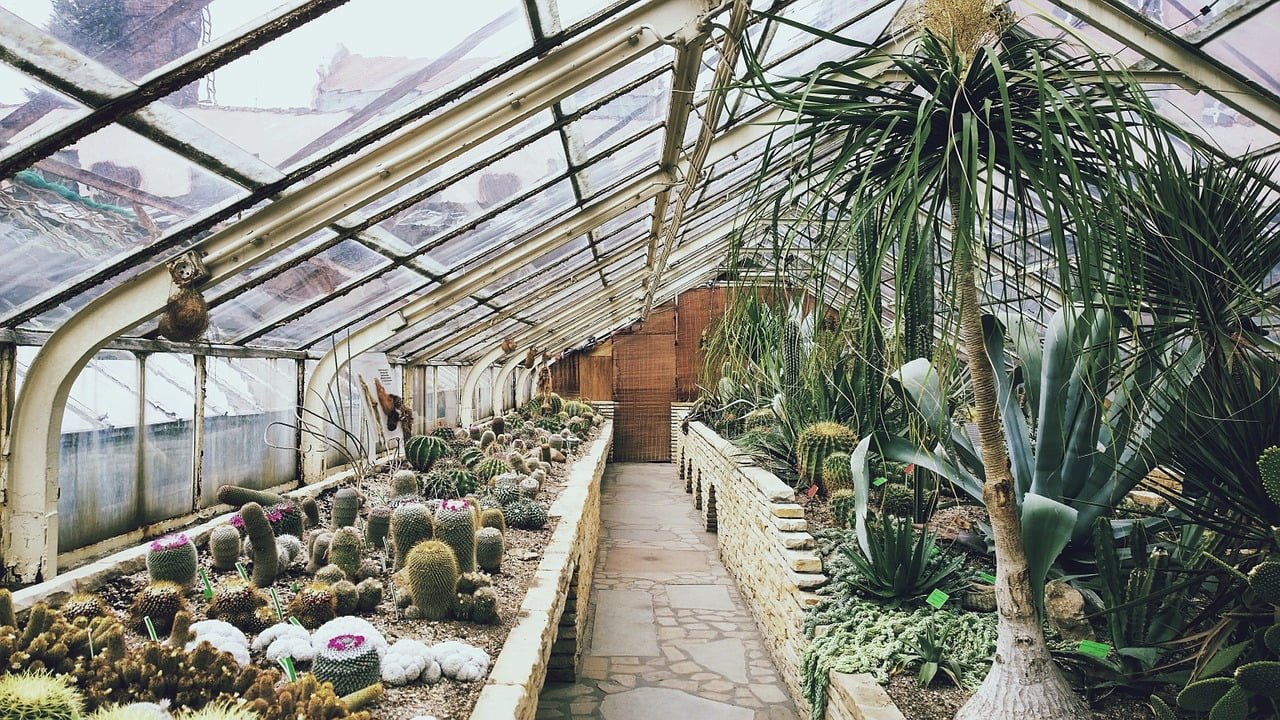There are various ways on how to heat a greenhouse naturally; using compost, insulating, and building an underground are just a few ways to do so.
Well, most people living in the northern hemisphere only do gardening in the summertime, or during warm weather. Winter is always a struggle for every gardener. Even with someone who uses a greenhouse, the cold still manages to come in.
Below we have listed seven different effective methods on how to heat a greenhouse naturally. With this, you can choose which one best suits your condition and preference.
Contents
Natural Methods To Heat Greenhouse
Heating your greenhouse doesn’t require too much energy cost. In this section, you will know the basics on how to heat a greenhouse naturally. Just read on!
# 1 Use compost
Compost generates a lot of heat through its natural breakdown — the bacteria in the compost that does the breaking down process that produces heat.
Lay down a coat of fresh compost on your garden beds before the cold weather comes. It will help keep your plants warm, especially the roots. Since the roots of the plants are the most vulnerable part, they must have extra care and attention.
Do not go lightly on laying down your compost. Put a good two to three inches worth on the garden bed. Bacteria love to thrive in warm places. The thicker your compost is, the warmer it will be for bacteria to generate more heat for your plants.
# 2 Insulating your greenhouse
Insulation works very well in trapping heat inside your greenhouse, but it blocks a lot of light too. For this to work, use double layers of plastic for the windows. Since plastic is transparent, not only can it insulate the greenhouse , but light can pass through easily as well.
This double layer of plastic increases the R-value of the greenhouse. From the looks of it, layering with plastic may seem ineffective, but it helps tremendously in trapping heat.
# 3 Insulating the northern side of the greenhouse
You might be wondering, “why is the northern side important to be insulated?” Well, to the common knowledge of everyone, living in the northern hemisphere implies that the sun is on the south side.
The coldest part of your greenhouse will always be the northern side. So, instead of having the wall on that side made of plastic, better use Styrofoam sheets for insulation. Apart from helping in trapping heat inside, it works well as a wind blocker too.
# 4 Black wood mulch for walkways
A lot of people don’t pay attention to the walkway inside their greenhouse. They do not see that walkways can absorb a ton of sunlight and have it converted into heat.
Keep your walkway left bare with dirt or use black wood mulch . Why black? Well, dark colors absorb heat better than light colors. That’s why people wear light-colored clothes during the summer because it doesn’t absorb as much.
If you have a bigger budget, you can opt to use black colored cement for your walkway. It’s expensive to purchase and have it constructed inside your greenhouse, but it has the highest heat absorbancy among the three materials.
# 5 Partially build your greenhouse underground
This is the most effective way to heat your greenhouse. But, it is also the most difficult one to do. The deepest you want to build on is 4 feet. Then, add another 4 feet above the ground to the roof of your greenhouse.
Remember how bacteria in the soil generate heat? It works the same way here. Since your greenhouse is partially underground, the earth that surrounds it acts as an insulator.
The lowest temperature a partial underground greenhouse can go is 32 degrees Fahrenheit. Even in the coldest of winter, the ground will always stay warm. Therefore, the inside of your greenhouse will remain warm as well.
# 6 Use heat absorbing barrels
Go and get black plastic barrels. Fill them up with water and place them inside the greenhouse where the sun can directly strike them. Just like the black wood mulch, the black barrels work well in absorbing because of the dark color.
As soon as the sun strikes the black plastic barrels, they will absorb the sunlight and convert it to heat; then it will warm up the water inside. Just like a battery that stores energy, the water holds onto the heat and releases it when the area begins to cool down.
Make sure the way you place your barrels does not obstruct your plants; they need sunlight too. It is best to place them on the north side of your greenhouse. During summertime, don’t forget to cover them with a white cloth so that it won’t overheat your greenhouse.
# 7 Use a Heater (only if necessary)
A heater is only to be used when all other options have failed. Place the heater on the north side of the greenhouse. It only needs a small space to fit in. If you worry that the heater may produce too much carbon dioxide, the plants have got you covered. They will consume carbon dioxide and convert it into oxygen.
Conclusion
Heat is valuable to plants for them to grown healthy. Plus, most plants will not survive in the cold so you must do something to keep heat inside your greenhouse.
As a bonus tip, if you cannot heat your greenhouse, you can always plant cold-weather plants inside your greenhouse. There are certain types of plants that grow well in the cold weather. That’s a great way to make use of colder areas in your greenhouse.
Hopefully, you have learned the basics on how to heat a greenhouse naturally.
